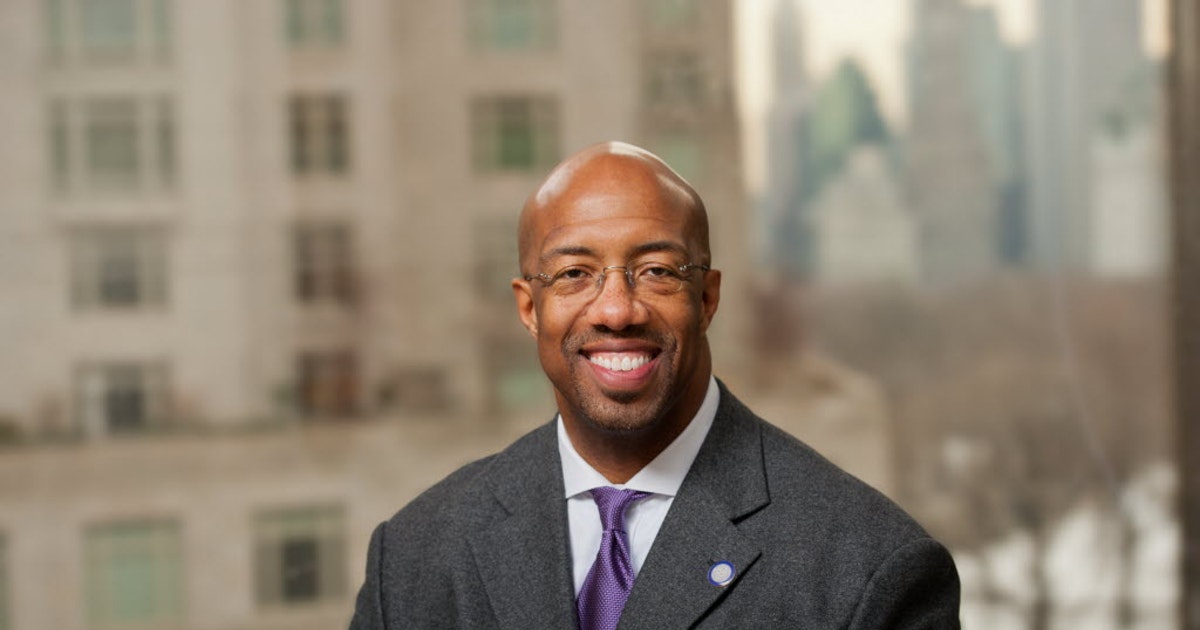This story was produced in collaboration with the Hechinger Report.
It’s not uncommon for college students to work to save money for everything from books to spring break vacations. But schools generally don’t require students to work—unless they are work colleges.
There are nine federally designated work colleges, in which all residential students are required to work; school leaders track their performance at work just as they do in academic classes. There are evaluations, performance reviews, and, in some cases, grades. Most students come from low-income backgrounds, and the work significantly offsets the cost of their tuition and fees. Schools are typically in rural areas, such as Berea, Kentucky; or Point Lookout, Missouri. But in March of 2017, when Paul Quinn College officially became a work college, it changed the image and perception of what these schools can do and where they can do it.
Paul Quinn College is in Dallas, the ninth-most populous city in the United States; it’s the first urban work college and the first historically black work college. Now the college, which has become known for taking unusual paths to success, is beginning a new chapter that will make it even more unusual.
“We’re about to start a national system of urban work colleges as well as a national consortium or urban work colleges,” its president, Michael Sorrell, says.
Many work-college advocates believe the time is right. Among adults aged 29 or younger, 37 percent had outstanding student loan debt, according to a 2017 report from the Pew Research Center.
In August, when Paul Quinn’s 2018–19 school year begins, it is expanding to a new campus in Plano, Texas, just weeks after announcing a fledgling partnership with two urban schools in Michigan and Ohio.
Part of Plano’s appeal is the number of corporations located there, Sorrell says. PepsiCo and FedEx have regional corporate offices there, and Toyota Motor North America moved its headquarters to Plano in July of 2017. The Plano region added more than 114,000 jobs between 2010 and 2015, according to the city’s economic development team.
At most work colleges, students work on campus, often in farm-related duties. Paul Quinn, by contrast, takes advantage of being in a major city and allows students to work on or off school grounds. Off-campus positions are usually in a corporate office, offering students a stepping stone to post-college careers.
Across the country, most undergraduates work, Sorrell says, so it only makes sense to ensure that a student’s work life complements what he or she learns in class.
“Eighty-plus percent of the independent college students are working,” Sorrell says. “More than 70, 75 percent of the dependent college students are working.”
Some Paul Quinn students are already working in Plano, which is about 35 miles north of the Dallas campus, but this fall the school will have an official presence in the city. The college is preparing to have about 40 or 50 students in Plano when school starts on August 13th, says Chris Dowdy, the vice president of academic affairs. For in-person instruction, students will go to classes at designated spaces easily accessible from their jobs and provided by the college’s corporate partners. This fall, Quinnites, as students are called, will have class instruction on Mondays, Wednesdays, and Fridays, leaving Tuesdays and Thursdays for work.
While Paul Quinn’s urban location makes it different from the other work colleges, all the schools have the underlying mission to “reduce poverty and get kids out of poverty,” says Robin Taffler, executive director of the Work Colleges Consortium.
At Berea College, 82 percent of students receive Pell grants, federal financial aid reserved for low-income students; the mean family income for first-year students at Berea is less than $30,000, the school reports, and students typically graduate $5,800 in debt, according to the Department of Education. At Sterling College, a work college in Craftsbury Common, Vermont, 46 percent of students receive Pell grants, and the average student graduates $17,035 in debt.
While such debt can be burdensome, work-college graduates typically owed about $10,000 less than graduates from public colleges and about $15,000 less than graduates from private non-profit schools, according to a 2012 report from the Work Colleges Consortium, the most recent report available. Nationally, students who graduated from four-year non-profit colleges in the 2015–16 school year and borrowed for their education left with about $28,400 in debt, according to the CollegeBoard.
Among Paul Quinn students, 72 percent received Pell grants. Tuition, fees, and room and board were $14,495 for the 2017–18 school year. Because of the school’s work-college model, Sorrell says, students can graduate with less than $10,000 in debt.

(Photo: Paul Quinn College)
Like most work colleges, Paul Quinn is relatively small, spread across just under 150 acres, with a fall 2018 enrollment of about 550 students. The campus is decorated with murals celebrating famous African Americans—Malcolm X, Martin Luther King Jr., Harriet Tubman—and inspirational messages.
“WE/me,” meaning “we over me”—the school’s mantra—is painted in purple letters on a wall outside the president’s office and in a computer lab. And students from the college’s Summer Bridge Program—a required onboarding program in which new students take classes and learn about the school’s history and culture—decorate campus walls with purple and gold handprints as well as inspirational sayings. Among them: “God only gives the hardest battles to the strongest warriors” and “To the crazy ones who will change things.”
As students progress, however, many will see less of campus and more of corporate work settings.
When they demonstrate they can work at a higher level, the college helps them find an off-campus job, Sorrell says. But students aren’t guaranteed a cushy office job away from the campus simply because they want one.
“The companies select them,” Sorrell says. “You have to compete.”
He believes the urban work college model is vital for current and future learners.
“The demographic that we serve is the demographic that is becoming the majority of higher education. More than 50 percent of all higher education students are Pell grant students,” he says, adding that a majority of kindergarten through 12th grade public school students now qualify for free or reduced-price lunches. “This is who’s coming to college. So you need to do something different.”
Work colleges can help some of these students get an education—plus food, housing, and a paycheck.
The Department of Education allocates $9,625,000 annually for work colleges, divided among the nine institutions. “As more colleges come on board, the pie simply gets divided further,” Taffler writes in an email.

(Photo: Delece Smith-Barrow/the Hechinger Report)
Paul Quinn’s two new partners may soon ask for a share. In June, Kuyper College in Grand Rapids, Michigan, and Wilberforce University in Wilberforce, Ohio, joined with Paul Quinn to form the Urban College Consortium. Wilberforce and Kuyper have committed to exploring how to launch work college models on their campuses.
“Part of the strategy in exploring the work college model is looking at how we can enhance our already established co-op program,” says Tashia Bradley, executive vice president and chief innovation officer at Wilberforce. (Co-op programs combine work experience with classroom studies and give students academic credit for their jobs, but do so in a more informal way than work colleges.)
School leaders at Wilberforce, a historically black college near Dayton, are reviewing what a liberal arts school with an entrepreneurial intent could look like, Bradley says. Being in the consortium “creates an opportunity for us to innovate together.”
Kuyper’s president, Patricia Harris, says the school, which already requires internships for all its degrees, wants to focus on how to meet the needs of working students. In the fall, the school is planning to soft-launch KuyperWorks for students who work on campus, which is more than half of the 200-person student body, Harris says. It will help them learn how to be professional, collaborate with others, and problem-solve, as well as learn job-specific skills.
In June, the agency that accredits Wilberforce downgraded the university’s status from accredited to accredited but on probation, citing inadequate resources and lack of planning to maintain quality. Kuyper, too, is working on accreditation issues, including reducing debt and improving enrollment, after receiving a warning letter from the accrediting agency.
While the federal funding that work colleges receive can go toward improving academic offerings and student resources, money alone isn’t a sensible reason for becoming a work college, Harris says.
“I don’t think any college is going to go into a work college model thinking it’s going to help them financially, because there are so many costs incurred,” she says. “You have to be very deliberate and know what it’s going to take, not only in cost but also for personnel, too, and training.”
And federal money to support the work program isn’t guaranteed, Taffler says. Schools must still apply for the grant each year, and then match it. “Work college dollars are matched dollar for dollar,” Taffler says. “So if your college gets $300,000, you have to match it with $300,000 of institutional funds.”
Before an institution is federally designated a work college, it must run a work program for two years and meet specific requirements, such as how many hours residential students work per week.
“This is a very large decision, and it will create a lot of work and change,” Harris says.
But Kuyper and Wilberforce are partnered with an institution that seems to have mastered how to change for the better.
Sorrell took over as president of Paul Quinn in 2007 and is its longest serving president. At the start of his tenure, the college’s original accrediting body—the Southern Association of Colleges and Schools—removed its accreditation because of the school’s large debt and concerns over student learning outcomes, among other reasons. “We went from 550 students to 150 students,” Sorrell says.
Turning Paul Quinn into a work college—in part by canceling football and turning the field into a campus farm—is one main reason it’s back on solid footing, he says.
Sorrell believes his urban work college, and future urban work colleges, will meet the needs of today’s students who face taking on debt to pay for school.
“It’s a model that works because it’s speaking to the needs of the marketplace,” Sorrell says.
This story was produced in collaboration with the Hechinger Report, a non-profit, independent news organization focused on inequality and innovation in education.





